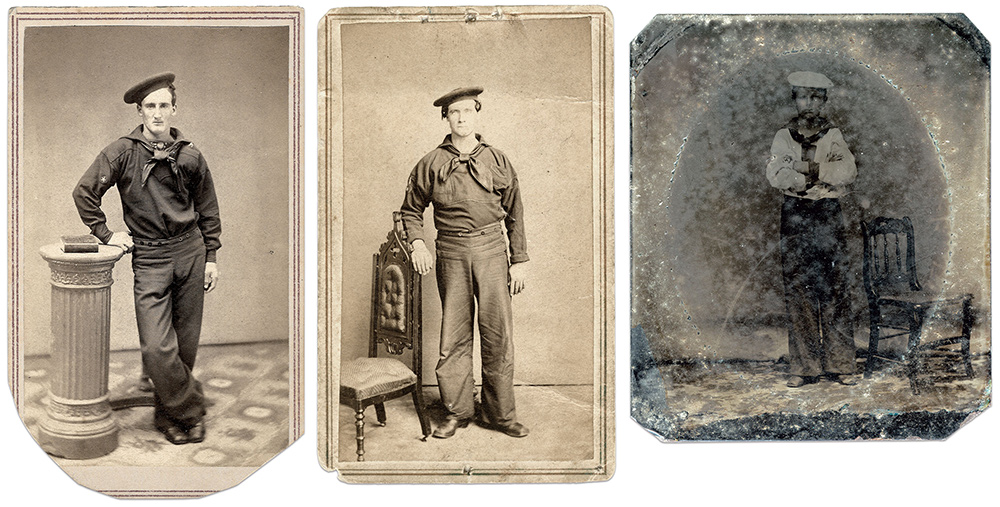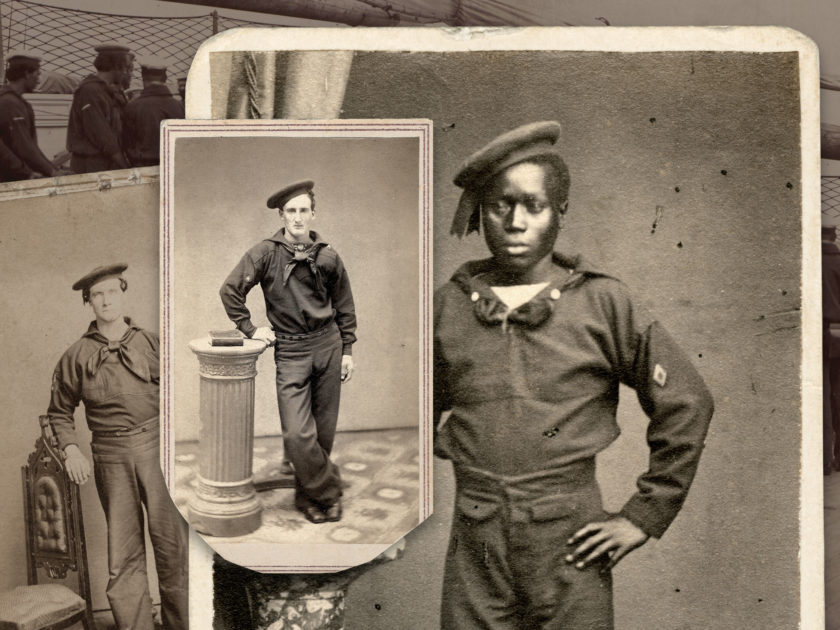By Ron Field
To ensure the safe operation of a United States Navy vessel during the antebellum and Civil War years, time onboard ship was divided into watches reckoned by the ring of a ship’s bell. According to Boy First Class Charles Nordhoff, who served aboard the ship-of-the-line Columbus from 1845 through 1848, five standard watches of four hours each, and a pair of shorter two-hour periods called a “dog watch,” occurred each day. At the end of the first half hour of a watch, the ship’s bell struck one; at the end of the second half hour, it struck two, and so on, until it was eight bells, which marked the expiration of four hours, or a watch. The series recommenced with a new watch on duty. To facilitate this system, a ship’s crew divided into port (left) and starboard (right) watches. Some ship commanders ordered that distinctive watch marks be worn on the sleeves of enlisted sailors’ clothing, as to distinguish the particular watch.
Origins
As regulations did not mention watch marks, there is no means of determining their origins or earliest use. One can logically assume that individual ship commanders employed them during antebellum times.
How they were worn
Watch marks attached to the upper sleeves of garments were worn by enlisted sailors. In a letter written from the U.S. steam frigate Minnesota in June 1863, Landsman Charles H. Badger described how they were worn aboard his vessel. “A diamond one inch in length, worked with white or black thread on a piece of cloth and sewed on the left arm of the shirt, frock, jacket or coat, denotes the wearer belongs to the port watch. A star on the left arm shows that the man belongs to the starboard watch.” Although Badger states that watch marks aboard Minnesota were worn on various types of clothing, extant images and garments show them only on the upper sleeves of dark blue jumpers, over-shirts, and white frocks. Different marking systems appeared on other vessels. Images of crew members aboard the U.S. steamers Mendota and Santiago de Cuba show narrow horizontal strips of white cloth on left or right sleeves dependent on the watch.
Examples

![Identified on the reverse of this image only as “‘Jim.’ Steward. Star[boar]d Steerage Mess,” this sailor wears a diamond-shaped watch mark on the left sleeve of his jumper, which indicated the starboard watch on his particular vessel. Carte de visite by an anonymous photographer. National Museum of African American History & Culture.](https://atavist-migration-2.newspackstaging.com/wp-content/uploads/2015/09/1anmaahc20-1590626483-82.jpg)

References: Nordhoff, Man-of-War Life. A Boy’s Experience in the United States Navy. During a Voyage Around the World in a Ship-of the-line; “Letter from the Navy…U.S. Frigate Minnesota, Fortress Monroe, Va.,” Cedar Falls Gazette (Cedar Falls, Iowa), July 3, 1863.
Ron Field is a Senior Editor of MI.
SPREAD THE WORD: We encourage you to share this story on social media and elsewhere to educate and raise awareness. If you wish to use any image on this page for another purpose, please request permission.
LEARN MORE about Military Images, America’s only magazine dedicated to showcasing, interpreting and preserving Civil War portrait photography.
VISIT OUR STORE to subscribe, renew a subscription, and more.

